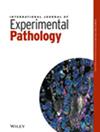Notoginsenoside R1 promotes osteogenic differentiation of human bone marrow mesenchymal stem cells via ERα/GSK-3β/β-catenin signalling pathway
Abstract
Human bone marrow mesenchymal stem cells (hBMSCs) are attractive therapeutic agents for bone tissue regeneration owing to their osteogenic differentiation potential. Notoginsenoside R1 (NGR1) is a novel phytoestrogen with diverse pharmacological activities. Here, we probed whether NGR1 has an effect on the osteogenic differentiation of hBMSCs. EdU, CCK-8 and Transwell assays were used to measure proliferation and migration of hBMSCs after treatment with different doses of NGR1. hBMSCs were treated with osteogenic differentiation induction medium for osteogenesis. Alizarin red S (ARS) and alkaline phosphatase (ALP) staining were used to measure mineralized nodule formation and ALP activity in hBMSCs, respectively. ICI 182780, an antagonist of oestrogen receptor alpha (ERα) was used to inhibit ERα expression. The results showed that NGR1 enhanced hBMSC proliferation and migration. NGR1 increased ALP activity and mineralized nodule formation as well as promoting ALP, RUNX2 and OCN expression in hBMSCs. NGR1 enhanced ERα expression and promoted GSK-3β/β-catenin signal transduction in hBMSCs. ICI 182780 reversed NGR1-mediated activation of the GSK-3β/β-catenin signalling and promoted an effect on hBMSC behaviour. Thus NGR1 promotes proliferation, migration and osteogenic differentiation of hBMSCs via the ERα/GSK-3β/β-catenin signalling pathway.

 求助内容:
求助内容: 应助结果提醒方式:
应助结果提醒方式:


